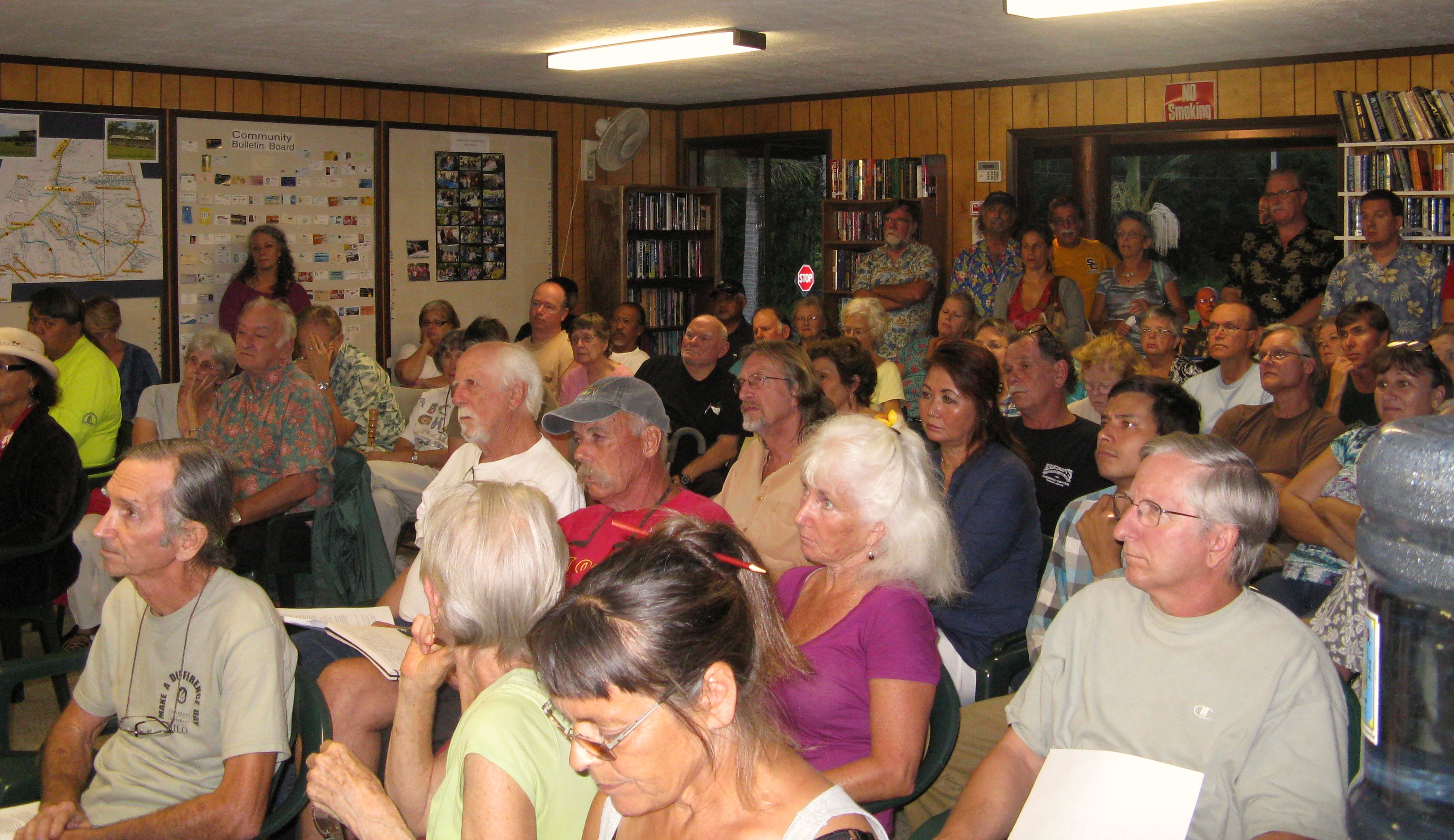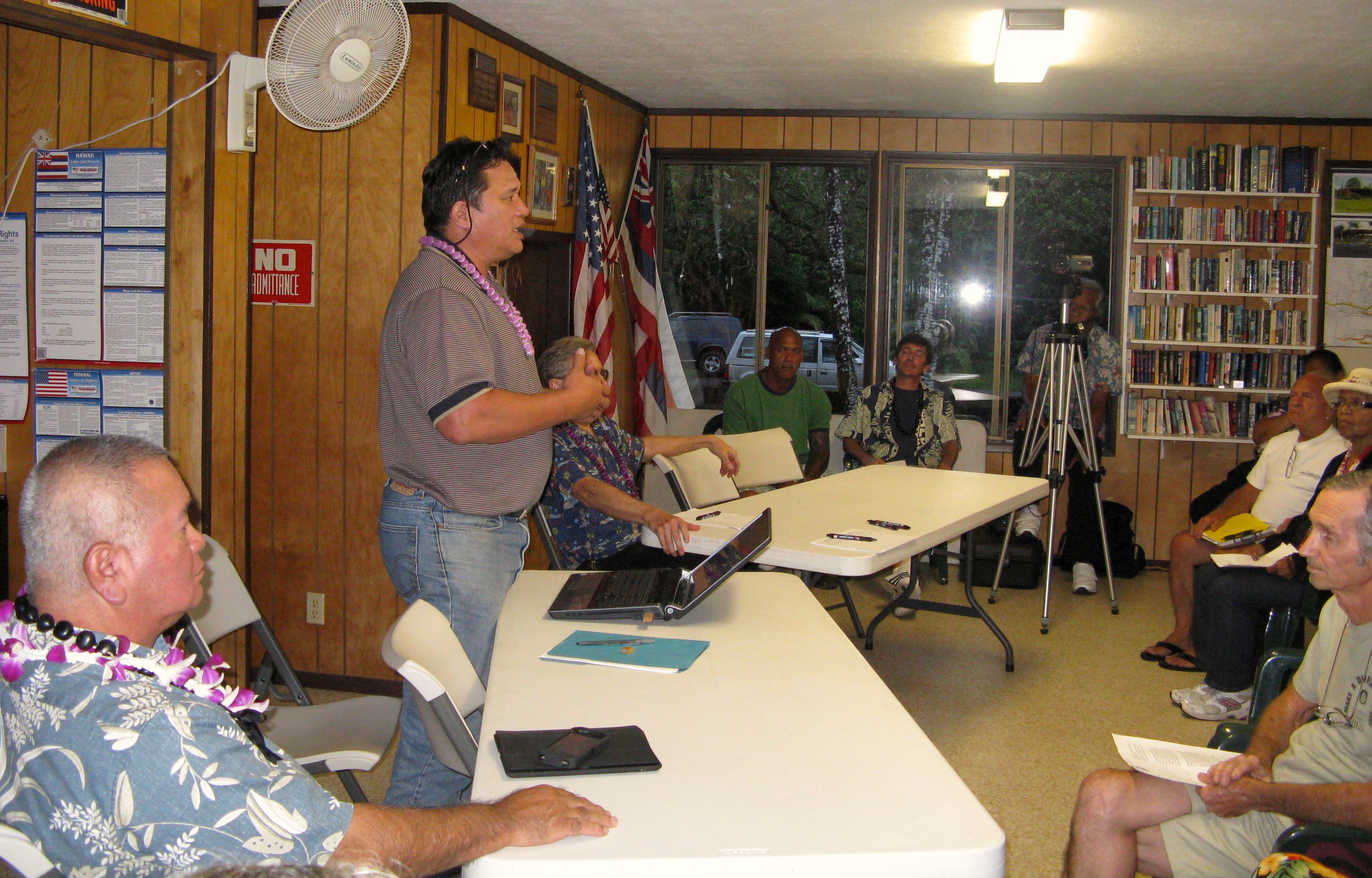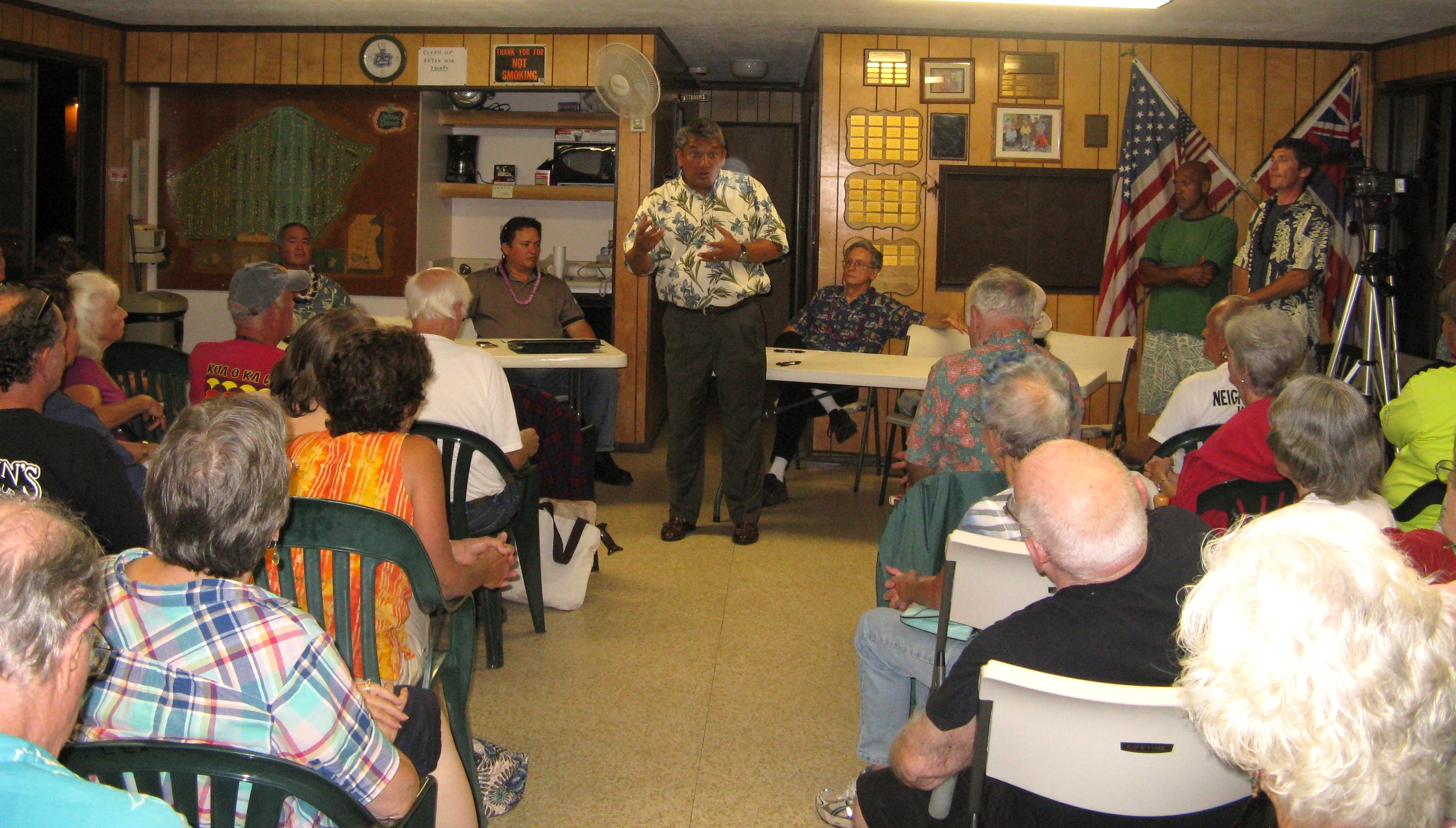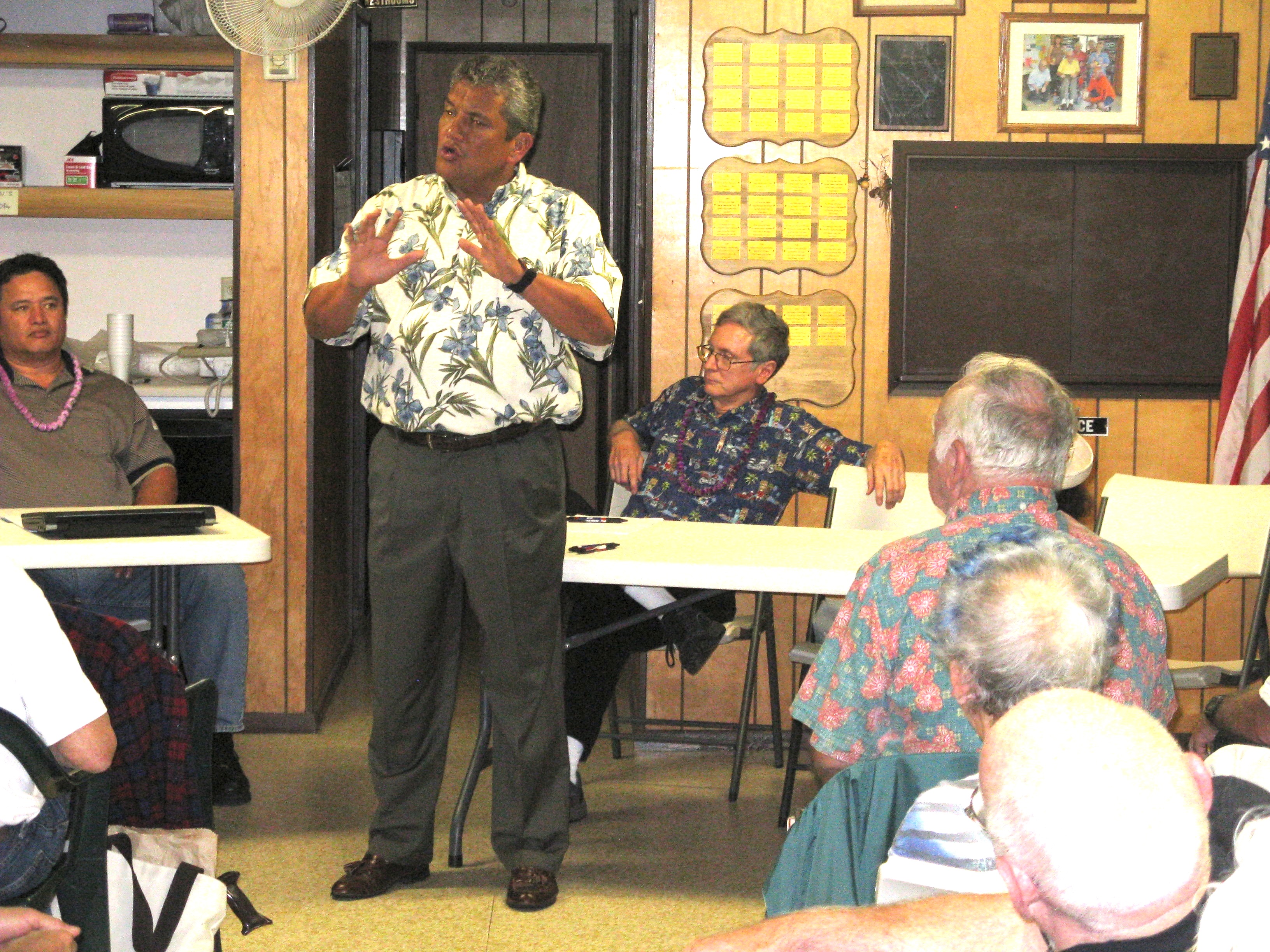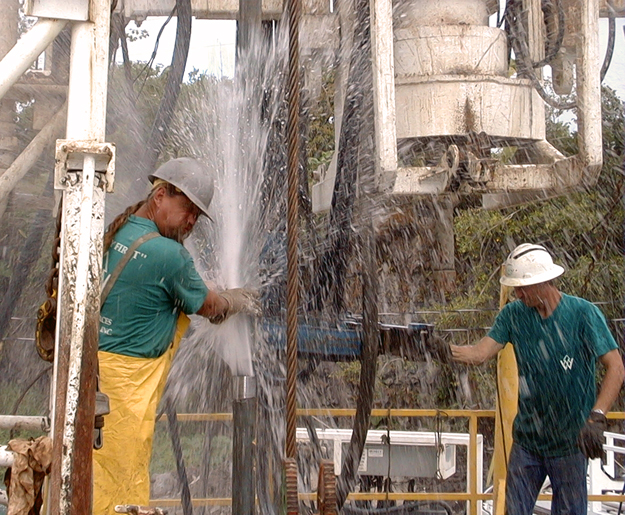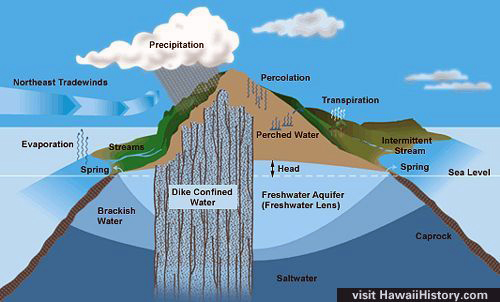There’s been so much talk about the Big Island’s aquifer lately, with the Thirty Meter Telescope about to start construction on Mauna Kea, that I thought I’d repost this March 2010 blog post.
Spoiler alert: We don’t need to worry. The aquifer is not in any danger.
This post is about research Don Thomas, a geologist and volcanologist at the University of Hawaii has been doing. He’s learned that the island has a tremendous amount of fresh water — much more than we realized in the past.
I asked Don what they’ve learned in the five years since then, and he told me this:
We did start the drilling program and we found high level water in the first test hole. Based on the results of the first hole, the regional water table appears to be standing at an elevation of ~4600′ above sea level in the central Saddle region. That elevation of the water table is more than adequate to allow fresh water to displace seawater to 10,000′ below sea level (and a good deal deeper if there is adequate permeability in the rocks underlying the island). That test hole also found that significant water bodies can be present as “perched” aquifers – where low permeability layers can intercept rainfall recharge and hold it at much higher elevations than we had generally assumed.
My 2010 blog post:
FRESH WATER BELOW SEA LEVEL
Richard Ha writes:
Don Thomas is a geologist and volcanologist at the UH Manoa and UH Hilo. Talking to him is so interesting; it’s kind of like an Indiana Jones novel. He is quiet and unassuming but the stuff he talks about just blows me away.
One day, he mentioned to me that he was looking for fresh water for the military at Pohakuloa. He told me about this neat instrument that can look down and see the electroconductivity of rock.
He told me that dry rocks have a certain signature and wet rocks a different one. He said that salty wet rocks and hot rocks have signatures that are hard to distinguish from one another. So one could locate heat zones?
Hmmm, I thought—maybe we can find hot geothermal zones?
Don just drops these kinds of info. I had no idea that geology could be so fascinating.
From Don’s email to me:
We’ve always assumed that the understanding of groundwater in Hawaii was pretty well established. The old timers, the guys I learned from when I was a student at UH, did a really fantastic job at interpreting the geology and groundwater hydrology. But, they didn’t have any data to tell them what was going on deep below sea level.
With our deep borehole, we found that some assumptions that were made about the flow of water below sea level was much different from the assumptions made by the earlier hydrologists. The most significant finding was that freshwater was found much farther below sea level than anyone had expected.
For water to be that deep, it meant that seawater had to have been forced out by much higher pressure freshwater than was expected. In order for those pressures to occur, it meant that freshwater was piled up much higher inside Mauna Kea than we had assumed. To prove that, we’ll need to drill a hole from a much higher elevation – in the Saddle.
But, because drilling is pretty expensive, I teamed up with some folks from the mainland who are experts in a type of measurement that can “look” downward into the ground and determine the electrical resistance of the rocks at various depths below the surface. Dry rocks are pretty poor electrical conductors; when they get wet with fresh water, they are better conductors; and when they are wet with sea water, they are even more conductive.
That exploration method is pretty expensive itself – but we were able to make measurements at about thirty stations across the Saddle – with the data we were able to collect, we were able to identify a couple of locations where the conductivity of the ground was similar to that of fresh water saturated rock at about 3000′ above sea level.
That doesn’t guarantee that we will find water there – it’s like in the detective stories – the conductivity of the rocks is only “circumstantial evidence” – it’s possible that other geologic conditions are responsible for the conductivity. The only way we can prove the presence of water at that elevation will be to drill into one of those zones. But, if there is water there, it will mean that we have a pretty large resource stored inside the island.
It’s also important to realize that another of the findings of the deep hole was that the local conditions – where ever you are on the island – will exert a strong control over where groundwater flows. So the conditions in Kona, whatever they are, will likewise have an impact on the water.
It’s just a guess, but my guess is that there is a lot more water stored on the Kona side of Mauna Loa than we have generally expected based on the relatively thin groundwater lens found near the coast. I’d bet that there are buried formations that are controlling groundwater flow – similar to the ones we found in Hilo – that may be forcing fresh water to discharge from that are deep below sea level. But, again, we don’t the necessary geological data to be able to prove that.
Richard again:
This really captures my imagination. It points out the value of education and science in a very practical way. Combine that with getting HELCO to use geothermal as base power—we can get that water at a reasonable cost.
This article predicts that the wet side of the island will get wetter and the dry side drier. If this is the case, then Don’s efforts could be the basis for solving our long-term problems.
I want the people to know the role Don has played and is still playing for the Big Island people’s benefit!

